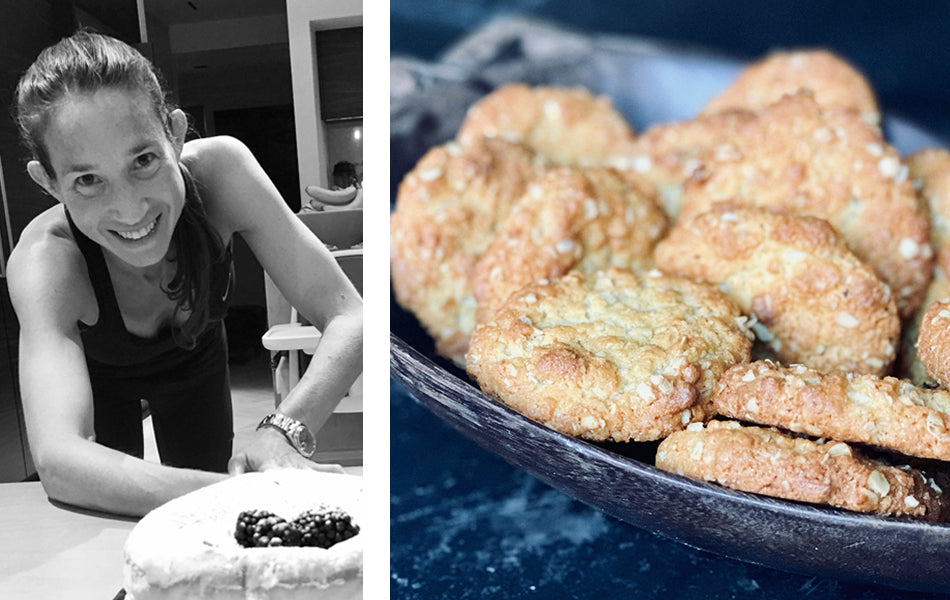New to Van Clarke? Subscribe to our newsletter for 15% off your first order. Start your haircare journey today.
New to Van Clarke? Subscribe to our newsletter for 15% off your first order. Start your haircare journey today.
April 25, 2023

These biscuits were originally made during WWI to send to the ANZAC troops (Australian and New Zealand Army Corps) serving in Gallipoli. The ingredients don't spoil easily and kept well during the long transport by ship. For this recipe I use my preferred gluten-free flour by Schar.
Ingredients:
100g gluten-free plain flour
100g sugar
100g unsalted butter
85g gluten free oats
85g desiccated coconut
2 tbsp boiling water
1 tbsp golden syrup
1 tsp bicarbonate of soda
¼ tsp xanthum gum (optional)
Method:
Preheat oven to 160⁰C (fan), line 2 baking trays with parchment paper.
In a large bowl mix the flour, sugar, oats, coconut and xanthum gum.
 Melt the butter and golden syrup. Mix the bicarb with the water, stir and then add this to the butter mixture, stirring again, then add this to the dry ingredients. Mix until everything comes together.
Melt the butter and golden syrup. Mix the bicarb with the water, stir and then add this to the butter mixture, stirring again, then add this to the dry ingredients. Mix until everything comes together.
 Take a spoonful of the mixture or snip the end of a piping bag to squeeze out portions onto the prepared tray. Repeat leaving space between each. Bake for appx. 10 mins until golden brown.
Take a spoonful of the mixture or snip the end of a piping bag to squeeze out portions onto the prepared tray. Repeat leaving space between each. Bake for appx. 10 mins until golden brown.
 Take out of the oven and allow to cool.
Take out of the oven and allow to cool.
 Enjoy.
Enjoy.

Gaby Van Clarke
October 27, 2025
None of us know what’s going to take us out. Life’s full of surprises. But we do know that the body starts to degenerate from about age 30 (more cells destroyed than created, barring excess weight gain) and also, crucially, that we can affect the speed of that ageing process.
October 25, 2025
Introduced by Portuguese merchants in the 16th century, and adapted over time to suit Japanese tastes, this light bouncy sponge is considered a traditional Japanese speciality. More delicate and airy than a regular sponge cake, castella ( カステラ, kasutera) is famous for a fine and moist crumb.
October 24, 2025